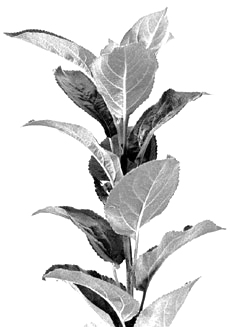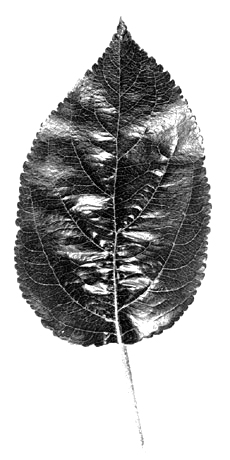
Jaune de Metz M9
| Origin |
East Malling, England. Selection 1912. | |
|---|---|---|
| Description |
Leaf: large, somewhat shiny, flat. Shape: oval, acute tip, truncate base. Margin: finely serrated, pie crust. Stipules: small, narrow, not distinct. Shoot: straight, reddish yellow with silvery sheen, brittle. | |
| Vigour | Dwarf, trees about 2 m high. | |
| Propagation | Roots well in stool bed but production per bed is low because of limited shoot number. Some new clones (e.g. Pajam 2) are more productive in stool beds. | |
| Resistance | Susceptible to woolly aphid. Partially resistant to collar rot. | |
| Uses | Major dwarf rootstock for high-density plantings. Very precocious; fruit colours and sizes well. Poor anchorage, therefore must have support throughout the tree’s life. Should be planted on sites that have deep, fertile, well-drained soil. | |
| Performance of selected strains |
Several strains of M.9 have been selected in overseas evaluation programs. The following two were introduced from France to Australia by Flemings Nurseries:
Pajam 1: 10% less vigorous than M.9, propagation fair, increased production, more side shoots and suckers. Three other selections that are commonly referred to in overseas literature, but have not yet been imported into Australia, are: NAKB T337: From the Netherlands, very similar to M.9 but slightly smaller, propagation good. | |
| Appearance | 
| 
|
This information forms part of Agfact H4.1.10 Apple rootstock identification.

